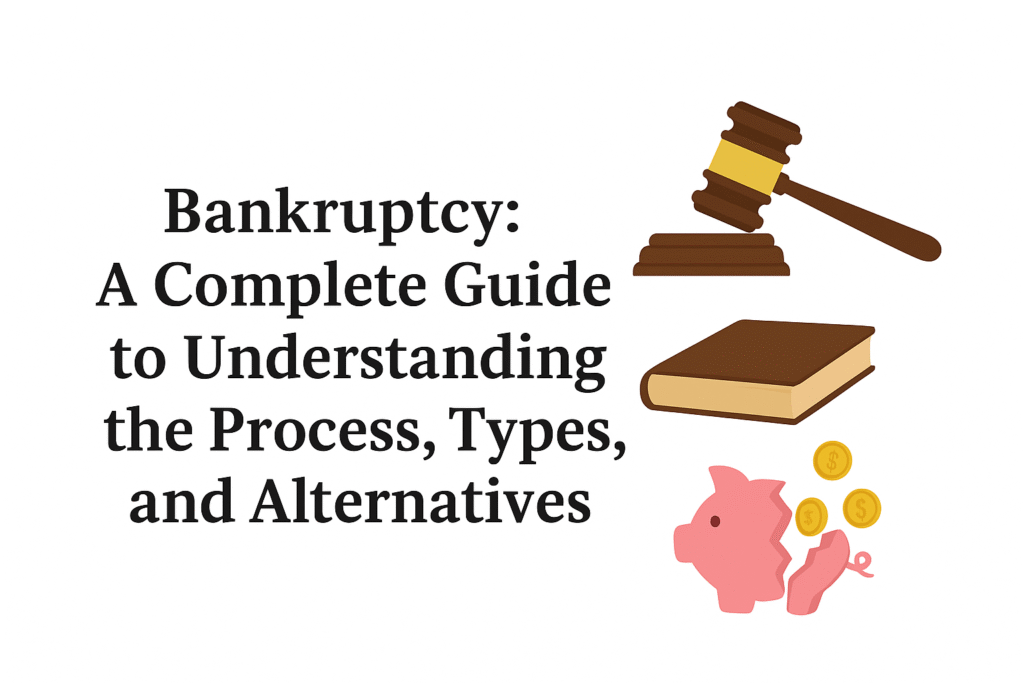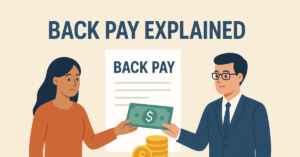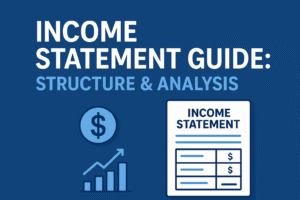Bankruptcy is one of the most significant financial decisions an individual or business can make. It is a legal process designed to help people or organizations eliminate or restructure overwhelming debt when repayment becomes impossible. While it offers a fresh financial start, bankruptcy also carries serious long-term consequences for credit, asset ownership, and future borrowing ability. Understanding how bankruptcy works, the different types of filings available, and possible alternatives is essential before making such a life-changing decision.
In this guide, we’ll walk through what bankruptcy is, how it works, the main types of bankruptcy filings in the U.S., the concept of discharge, the pros and cons, and alternative debt-relief strategies.
What Is Bankruptcy?
Bankruptcy is a legal process overseen by federal courts that allows individuals, businesses, municipalities, or other entities to either eliminate or repay debts under the protection of bankruptcy laws. The goal is to provide debtors with a “fresh start” while ensuring fair treatment for creditors.
It is important to note that bankruptcy does not erase all types of debts. For example, student loans, alimony, child support, and certain tax obligations often remain payable even after bankruptcy.
Bankruptcy is governed primarily by the U.S. Bankruptcy Code, and the process is administered by bankruptcy courts, which are a special part of the federal judicial system.
How Bankruptcy Works
The bankruptcy process begins when a debtor (an individual or business) files a petition in bankruptcy court. This filing may be voluntary (initiated by the debtor) or involuntary (initiated by creditors in certain cases).
Once a petition is filed:
- Automatic Stay: The court immediately issues an automatic stay, halting most collection activities, lawsuits, wage garnishments, and harassing calls from creditors.
- Trustee Appointment: A bankruptcy trustee is appointed to oversee the case, evaluate assets, and ensure fair treatment of creditors.
- Asset Evaluation and Debt Review: Depending on the chapter filed, the trustee may liquidate certain assets or approve a repayment plan.
- Court Approval: The bankruptcy court must review and approve all plans and asset distributions.
- Debt Discharge: If approved, qualifying debts are legally discharged, meaning the debtor is no longer legally obligated to repay them.
Types of Bankruptcy Filings
There are several types of bankruptcy filings under the U.S. Bankruptcy Code, each designed for specific situations. The most common include Chapters 7, 11, and 13, but there are also provisions for municipalities, family farmers, and international cases.
Chapter 7: Liquidation Bankruptcy
- Purpose: To eliminate most unsecured debts such as credit cards and medical bills.
- How It Works: A trustee may liquidate (sell) non-exempt assets to repay creditors. Exempt property, such as primary residences (up to certain limits), cars, and basic household goods, may be protected.
- Who Qualifies: Individuals and businesses who pass the “means test,” showing insufficient income to repay debts.
- Timeframe: Usually resolved in 3–6 months.
Chapter 11: Reorganization for Businesses
- Purpose: Allows businesses (and sometimes high-net-worth individuals) to restructure debts and continue operating.
- How It Works: The debtor proposes a reorganization plan outlining how debts will be repaid over time while maintaining operations.
- Who Qualifies: Corporations, partnerships, and in rare cases, individuals with complex financial situations.
- Timeframe: Can last several years depending on complexity.
Chapter 13: Wage Earner’s Plan
- Purpose: Helps individuals with steady income create a repayment plan instead of liquidating assets.
- How It Works: The debtor proposes a 3–5 year repayment plan to pay back all or part of the debt.
- Who Qualifies: Individuals with regular income who do not meet the debt limits for Chapter 11.
- Timeframe: Typically lasts 3–5 years.
Chapter 9: Municipal Bankruptcy
- Purpose: Provides debt relief for municipalities such as cities, towns, school districts, and counties.
- How It Works: Allows restructuring of debts while continuing essential public services.
- Notable Example: Detroit’s 2013 bankruptcy, the largest municipal bankruptcy in U.S. history.
Chapter 12: Family Farmers and Fishermen
- Purpose: Specifically designed to help family farmers and fishermen restructure debts.
- How It Works: Similar to Chapter 13, but with more flexible terms suited to agricultural and fishing industries.
- Who Qualifies: Individuals or corporations engaged in farming or fishing with debts below certain limits.
Chapter 15: Cross-Border Insolvency
- Purpose: Addresses bankruptcy cases that involve debtors, assets, or creditors in multiple countries.
- How It Works: Coordinates cooperation between U.S. bankruptcy courts and foreign courts to ensure fairness and consistency.
What Is a Discharge in Bankruptcy?
A discharge in bankruptcy is a court order that permanently releases the debtor from personal liability for specific debts. Once a discharge is granted, creditors can no longer attempt to collect those debts.
- In Chapter 7, most unsecured debts are discharged within a few months.
- In Chapter 13, debts are discharged after successful completion of the repayment plan.
- Certain debts (like student loans, taxes, child support, and alimony) are rarely discharged.
The discharge is the ultimate goal of bankruptcy, as it provides the debtor with financial relief and a chance to rebuild credit.
Pros and Cons of Bankruptcy
Like any major financial decision, bankruptcy has both advantages and disadvantages.
Pros Explained
- Debt Relief: Provides immediate relief from overwhelming debt obligations.
- Automatic Stay: Stops creditor harassment, lawsuits, foreclosures, and wage garnishments.
- Fresh Start: Offers a chance to rebuild credit and finances.
- Asset Protection: Certain assets (like primary homes, vehicles, and retirement accounts) are often exempt.
- Structured Repayment (Chapter 13/11): Allows debtors to repay under manageable terms while keeping assets.
Cons Explained
- Credit Damage: Bankruptcy can remain on a credit report for 7–10 years.
- Loss of Assets: Non-exempt property may be liquidated under Chapter 7.
- Public Record: Bankruptcy filings are public and accessible.
- Limited Access to Credit: Future borrowing may come with higher interest rates or denial of loans.
- Not All Debts Are Dischargeable: Certain obligations like taxes, student loans, and child support survive bankruptcy.
Bankruptcy Alternatives
Filing for bankruptcy is not the only solution to debt struggles. Before taking this step, debtors should explore alternatives that may provide relief without long-term consequences.
Negotiate with Creditors
Debtors can reach out to creditors directly to negotiate reduced balances, extended payment terms, or lower interest rates. Creditors may agree to settle for less rather than risk receiving nothing in bankruptcy.
Explore Forbearance Options
For borrowers struggling due to temporary financial hardships, creditors (especially mortgage lenders and student loan servicers) may allow forbearance. This temporarily suspends or reduces payments until the borrower’s situation improves.
Request an Offer in Compromise (OIC)
For tax debts, the IRS offers an Offer in Compromise, which allows taxpayers to settle tax liabilities for less than the full amount owed if they demonstrate an inability to pay in full. This option can be an alternative to bankruptcy for those overwhelmed by tax debts.
Conclusion
Bankruptcy is a powerful financial tool, but it is also a decision that carries lasting consequences. For individuals and businesses facing insurmountable debt, it can provide the relief needed to stop collections, protect essential assets, and build a path toward financial recovery. However, it is not a one-size-fits-all solution—different bankruptcy chapters serve different needs, and in some cases, alternatives such as debt negotiation, forbearance, or tax settlements may be more appropriate.
Before filing, it’s important to weigh the pros and cons, understand the impact on credit and assets, and consult with a qualified bankruptcy attorney or financial advisor. With the right approach, bankruptcy can serve as a stepping stone to a more stable financial future, but the best outcomes come from careful planning and informed decision-making.
Frequently Asked Questions (FAQs) About Bankruptcy
1. Can bankruptcy clear student loans?
In most cases, student loans are not discharged through bankruptcy. However, in rare situations, if a debtor can prove “undue hardship” through an adversary proceeding, some or all student loan debt may be forgiven. Courts use strict standards to determine undue hardship, so success is uncommon.
2. How long does bankruptcy stay on a credit report?
- Chapter 7 bankruptcy remains on a credit report for 10 years from the filing date.
- Chapter 13 bankruptcy stays for 7 years from the filing date.
Although it impacts creditworthiness, many individuals can begin rebuilding credit within a year or two after discharge.
3. Do I lose all my property if I file for bankruptcy?
Not necessarily. Bankruptcy law allows for exemptions, which protect certain assets such as primary residences (up to certain equity limits), vehicles, clothing, tools of trade, and retirement accounts. What you can keep depends on state-specific exemption laws and the type of bankruptcy filed.
4. Can I file for bankruptcy more than once?
Yes, but there are waiting periods:
- Chapter 7 after Chapter 7: 8 years between filings.
- Chapter 13 after Chapter 13: 2 years between filings.
- Chapter 7 after Chapter 13: 6 years (with exceptions if debts were repaid).
- Chapter 13 after Chapter 7: 4 years.
5. How much does it cost to file for bankruptcy?
Bankruptcy involves both court filing fees and attorney fees:
- Chapter 7: Filing fee is about $338 (as of 2025).
- Chapter 13: Filing fee is about $313 (as of 2025).
Attorney fees vary widely based on case complexity but typically range from $1,000 to $5,000.
6. Will bankruptcy affect my spouse?
If you file individually, your spouse’s credit is usually not affected, though jointly held debts may still impact them. If you file jointly, both spouses are included in the bankruptcy case, and both credit histories will reflect the filing.
7. Are all debts eliminated in bankruptcy?
No. Bankruptcy can discharge many unsecured debts (like credit cards and medical bills), but some debts generally remain, including:
- Child support and alimony
- Student loans (except in rare cases of undue hardship)
- Most tax debts
- Court fines and penalties
8. How soon can I rebuild credit after bankruptcy?
Rebuilding credit is possible soon after discharge. Steps include:
- Paying bills on time
- Using a secured credit card responsibly
- Keeping debt-to-income ratio low
- Monitoring credit reports regularly
Many debtors see gradual improvement in their credit score within 12–24 months after bankruptcy.







